Emily Lakdawalla • Aug 25, 2015
Three space fan visualizations of New Horizons' Pluto-Charon flyby
It has been a difficult wait for new New Horizons images, but the wait is almost over; Alan Stern announced at today's Outer Planets Advisory Group meeting that image downlink will resume September 5, so raw image release should resume September 11. In the meantime, a few space fans are making the most of the small amount of data that has been returned to date. Here are three cool visualizations of New Horizons' Pluto encounter, which differ in the amount of artistic license they take with the New Horizons images.
The first is by Matthew Earl, who wrote a Python script to produce something I'd been trying to make manually: an animation of New Horizon's optical navigation images, aligned on background stars. I like this animation for two reasons. The first is that it demonstrates the binarity of the Pluto-Charon system: both large objects mutually circle a point that lies outside either of them. The second reason is that it relates to the actual purpose for which New Horizons was commanded to take these images: to precisely locate Pluto and Charon's positions in space with respect to the reference frame of background stars.

The next take on New Horizons' flyby data is by Björn Jónsson, who has long been interested in the effects that atmospheres have on views of, and within, giant planets. Jónsson was inspired by the post-flyby images to simulate New Horizons' view of Pluto's atmosphere using an atmospheric model. The surface of Pluto is rendered using a global mosaic map that he created using publicly released images.
Simulation of the New Horizons Pluto-Charon flyby An animation showing the New Horizons Pluto flyby on July 14, 2015. The time covered is 09:35 to 13:35 (closest approach occurred near 11:50). Pluto's atmosphere is included and should be fairly realistic from about 10 seconds into the animation and to the end. Earlier it is largely just guesswork that can be improved in the future once all data has been downlinked from the spacecraft. Light from Pluto's satellite Charon illuminates Pluto's night side but is exaggerated here, in reality it would be only barely visible or not visible at all.Video: NASA / JHUAPL / SwRI / animation by Björn Jónsson
Finally, there is a more cinematic take by Gennady Ionov; the point of view in this animation follows that of the LORRI imager as it snapped photos throughout the flyby. But Ionov adds a bit of artistic license, noting that had LORRI been looking in the right direction at the right time, it would have seen Charon set and then rise again behind Pluto at closest approach. Alas, LORRI couldn't actually take that photo at the moment, because New Horizons had more important things to do with its precious time nearest Pluto. In this (and Björn's) animations, we get the next best thing: artistic but realistic takes on the moment of Charon's occultation by masters of spacecraft image processing. Ionov has posted several other animations with added camera effects, like motion blur.
Visualization of New Horizons' Pluto flyby, with occultations of Charon A simulation of the point of view of New Horizons' LORRI camera throughout the flyby of Pluto and Charon. The animation uses maps created from New Horizons image data by Björn Jónsson. You can find many more related animations on Ionov's Youtube channel.Video: NASA / JHUAPL / SwRI / Gennady Ionov
Thanks to Ashwin W for the tip to Earl's animation; the other ones were posted by the artists at unmannedspaceflight.com.
Support our core enterprises
Your support powers our mission to explore worlds, find life, and defend Earth. You make all the difference when you make a gift. Give today!
Donate

 Explore Worlds
Explore Worlds Find Life
Find Life Defend Earth
Defend Earth

